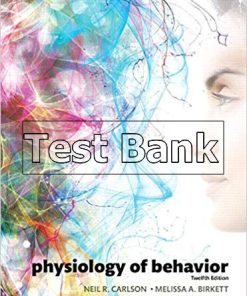Chapter 1: Origins of Behavioral Neuroscience
Chapter 2: Structure and Functions of Cells of the Nervous System
Chapter 3: Structure of the Nervous System
Chapter 4: Psychopharmacology
Chapter 5: Methods and Strategies of Research
Chapter 6: Vision
Chapter 7: Audition, the Body Senses, and the Chemical Senses
Chapter 8: Sleep and Biological Rhythms
Chapter 9: Reproductive Behavior
Chapter 10: Emotion
Chapter 11: Ingestive Behavior
Chapter 12: Learning and Memory
Chapter 13: Human Communication
Chapter 14: Neurological Disorders
Chapter 15: Schizophrenia, Affective Disorders, and Anxiety Disorders
Chapter 16: Autistic, Attention-Deficit, Stress,nd Substance Abuse Disorders
2. Full Table of Contents
Chapter 1: Origins of Behavioral Neuroscience
Understanding Human Consciousness: A Physiological Approach
The Nature of Behavioral Neuroscience
Natural Selection and Evolution
Ethical Issues in Research with Animals
Careers in Neuroscience
Strategies for Learning
Chapter 2: Structure and Functions of Cells of the Nervous System
Cells of the Nervous System
Communication Within a Neuron
Communication Between Neurons
Chapter 3: Structure of the Nervous System
Basic Features of the Nervous System
The Central Nervous System
The Peripheral Nervous System
Chapter 4: Psychopharmacology
Principles of Psychopharmacology
Sites of Drug Action
Neurotransmitters and Neuromodulators
Chapter 5: Methods and Strategies of Research
Experimental Ablation
Recording and Stimulating Neural Activity
Neurochemical Methods
Genetic Methods
Chapter 6: Vision
The Stimulus
Anatomy of the Visual System
Coding of Visual Information in the Retina
Analysis of Visual Information: Role of the Striate Cortex
Analysis of Visual Information: Role of the Visual Association Cortex
Chapter 7: Audition, the Body Senses, and the Chemical Senses
Audition
Vestibular System
Somatosenses
Gustation
Olfaction
Chapter 8: Sleep and Biological Rhythms
A Physiological and Behavioral Description of Sleep
Disorders of Sleep
Why Do We Sleep?
Physiological Mechanisms of Sleep and Waking
Biological Clocks
Chapter 9: Reproductive Behavior
Sexual Development
Hormonal Control of Sexual Behavior
Neural Control of Sexual Behavior
Parental Behavior
Chapter 10: Emotion
Emotions as Response Patterns
Communication of Emotions
Feelings of Emotions
Chapter 11: Ingestive Behavior
Physiological Regulatory Mechanisms
Drinking
Eating: Some Facts About Metabolism
What Starts a Meal?
What Stops a Meal?
Brain Mechanisms
Obesity
Anorexia Nervosa/Bulimia Nervosa
Chapter 12: Learning and Memory
The Nature of Learning
Synaptic Plasticity: Long-Term Potentiation and Long-Term Depression
Perceptual Learning
Classical Conditioning
Instrumental Conditioning
Relational Learning
Chapter 13: Human Communication
Speech Production and Comprehension: Brain Mechanisms
Disorders of Reading and Writing
Chapter 14: Neurological Disorders
Tumors
Seizure Disorders
Cerebrovascular Accidents
Traumatic Brain Injury
Disorders of Development
Degenerative Disorders
Disorders Caused by Infectious Diseases
Chapter 15: Schizophrenia, Affective Disorders, and Anxiety Disorders
Schizophrenia
Major Affective Disorders
Anxiety Disorders
Chapter 16: Autistic, Attention-Deficit, Stress,nd Substance Abuse Disorders
Autistic Disorder
Attention-Deficit/Hyperactivity Disorder
Stress Disorders
Substance Abuse Disorders
People also search:
foundations of behavioral neuroscience 9th edition pdf
foundations of behavioral neuroscience 9th edition ebook
history of behavioral neuroscience
foundations of behavioral neuroscience 9th edition
foundations of behavioral neuroscience 9th edition pdf free













